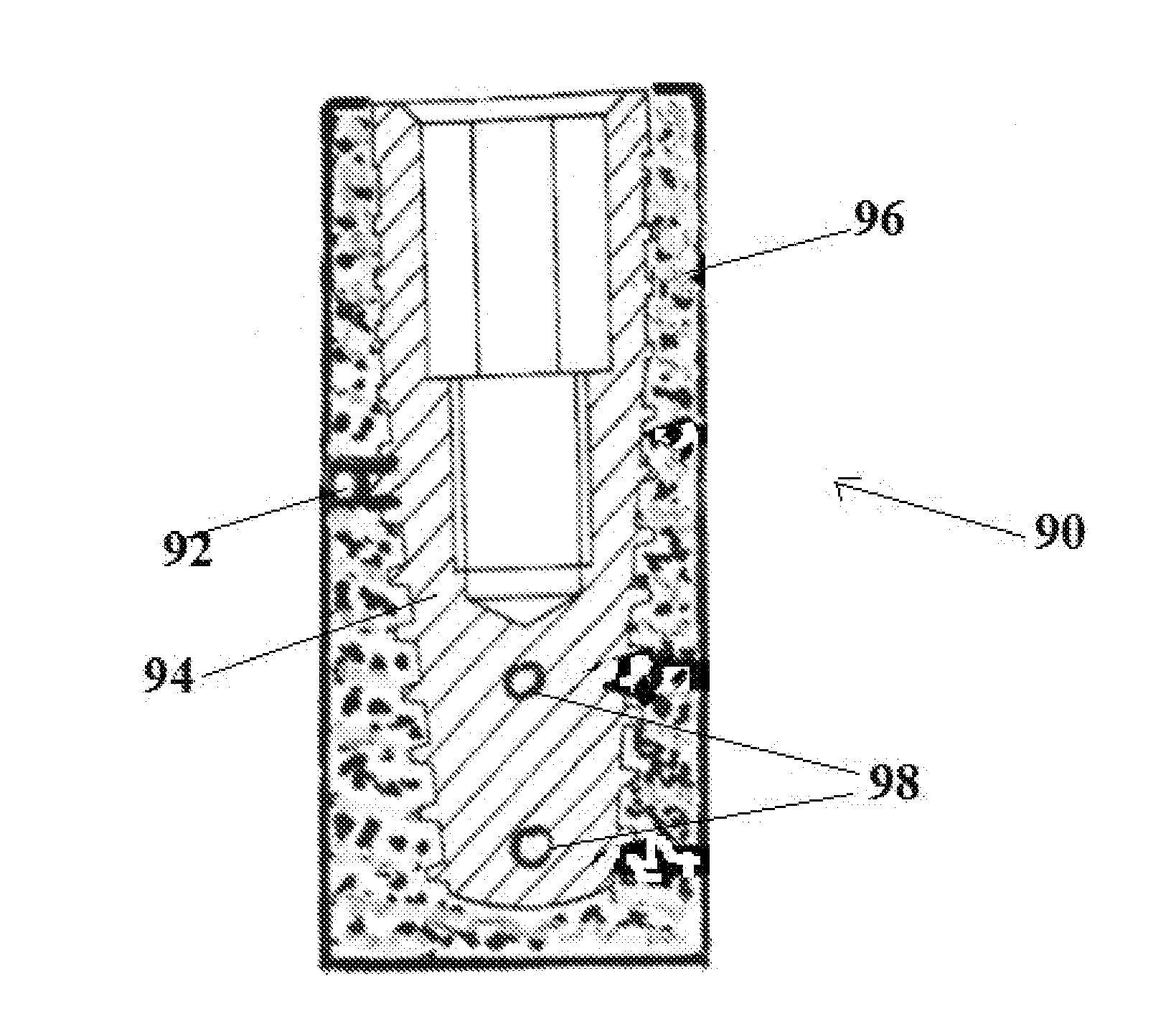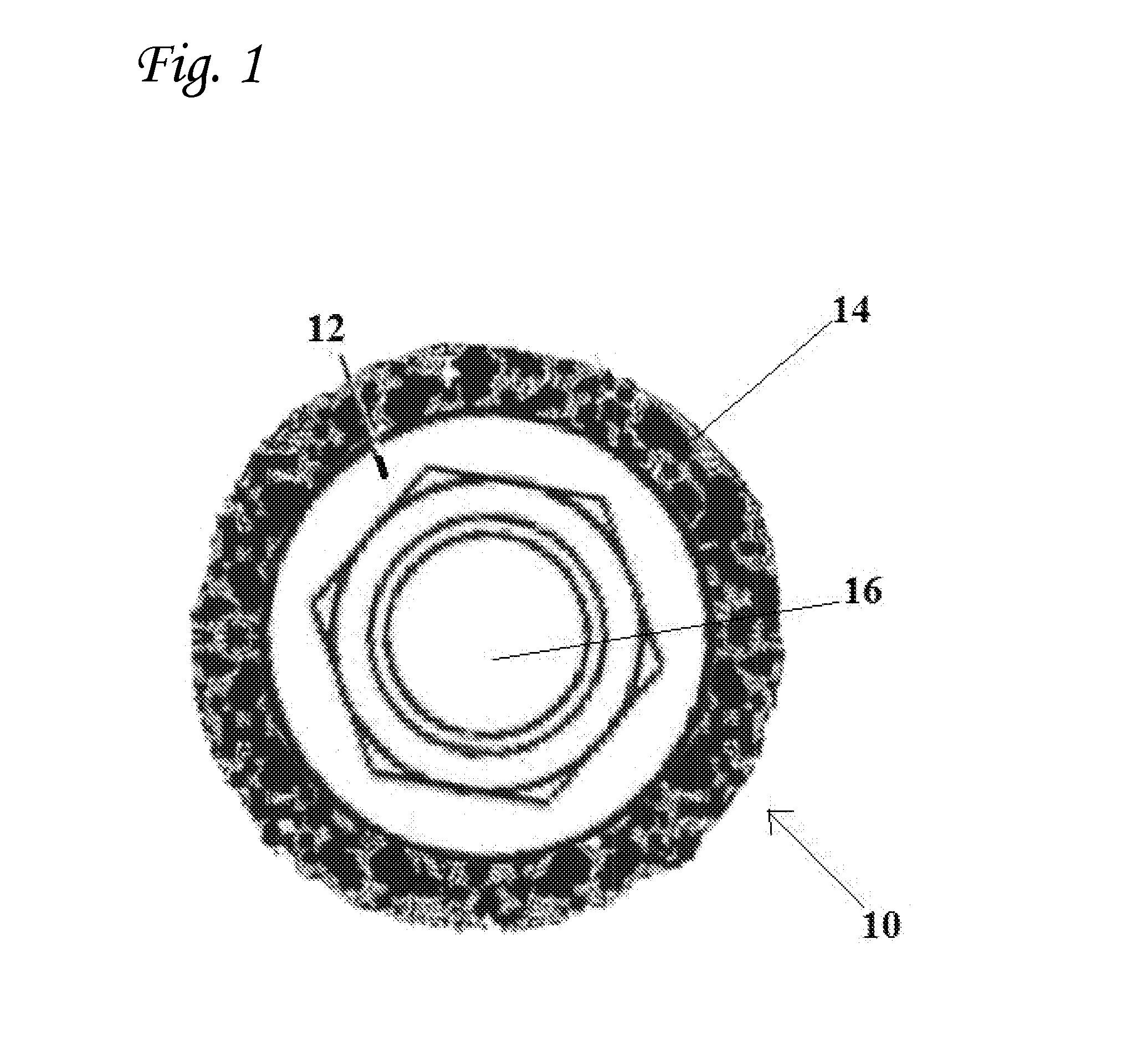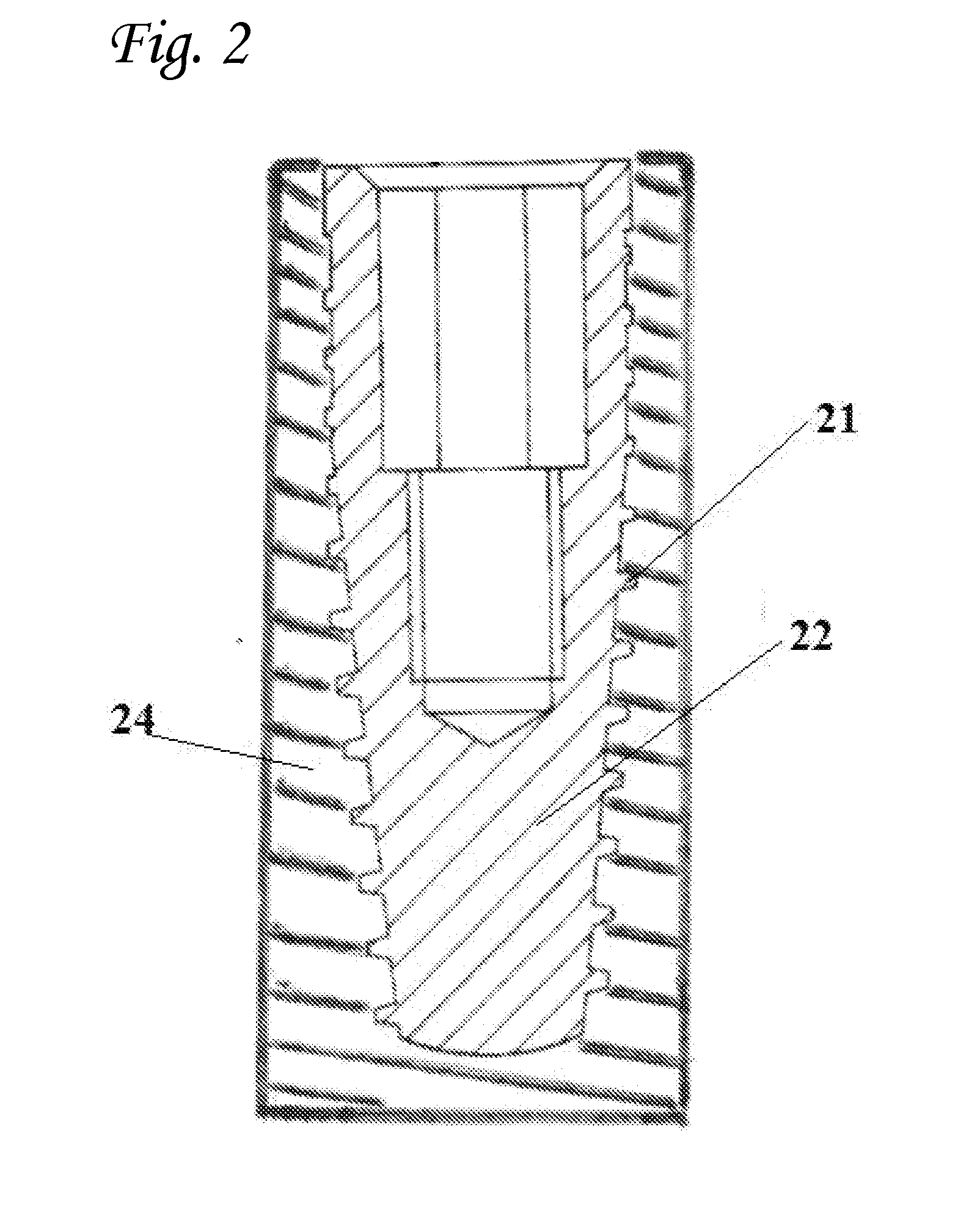Scaffold implant system
a technology of implant system and screw, which is applied in bone implant, medical science, dentistry, etc., can solve the problems of limiting or preventing the use of implants, methods, and serious drawbacks, and achieves the effects of reducing the risk of fracture, increasing the cost, and increasing the morbidity and inconvenience of patients
- Summary
- Abstract
- Description
- Claims
- Application Information
AI Technical Summary
Benefits of technology
Problems solved by technology
Method used
Image
Examples
example 1
Preparation of a Scaffold Implant System using a Bovine Bone Block
[0094]One embodiment of the scaffold implant device of the present invention may be prepared using a bovine bone block. A suitably-sized bone piece is obtained and then processed and decontaminated in the usual manner rendering it suitable condition for augmentation in the human body. In the present example, the bovine bone block is obtained from a commercial supplier (for example Bio-Oss by Geistlich Germany or SmartBone by IBI, Switzerland).
[0095]The bone block is cut and trimmed into a specific shape using CNC technology. The external shape of the block is cylindrical having a diameter of 7.5 mm and a length of 11.5 mm in length.
[0096]A longitudinal hole, having a diameter of 4.2 mm and a length of 10 mm is drilled in the middle of the cylinder from the top, downwards.
[0097]A longitudinal portion of the block is removed from its base. The length of the removed portion is 8.5 mm. The 3.0 mm of the upper part of the ...
example 2
Implantation of a Bovine Bone Block Scaffold Implant System
[0103]The dentist prepares an osteotomy site by exposing the alveolar bone. Using a dental drill with a diameter of 4.2 mm and length of 7.0 mm a longitudinal concavity having a depth of 2.1 mm and a length of 7.0 mm is cut into the bone. The concavity begins at the marginal ridge and continues toward the basal bone.
[0104]A scaffold implant device (prepared as described in Example 1, hereinabove) is inserted in the concavity by placing the exposed dental fixture portion in tight contact with the alveolar ridge bone. The 3.0 mm length of the upper part of the device is positioned on top of the alveolar ridge.
[0105]A bone screw (Surgidoc, United Kingdom) is used to secure the device to the alveolar ridge. It is placed through the horizontal hall in the bone block continuing through the horizontal hole in the implant fixture and into the alveolar ridge to a depth of about 5.0 mm. The bone screw is then torqued into its place wi...
example 3
[0106]The Scaffold implant mesh device is constructed from a titanium fixture and bone block.
[0107]The titanium fixture sprawls over the entire Scaffold implant space in a 3D mesh like structure (e.g. honeycomb shape). The titanium mesh can include different types of restorative connections (e.g. internal hexagon, external hexagon connection).
[0108]The titanium restorative connections will be positioned at the flat upper portion of the implant, ready to accept the prosthodontic restoration.
[0109]The titanium mesh is manufactured using an NC technique as a single unit that includes a mesh titanium fixture with restorative connections.
[0110]The Scaffold implant mesh device is surrounded by 1.5 mm depth of bone material forming a floor and walls around the mesh fixture and open at the top (e.g. forming an envelope-like structure). The bone material used may be of any suitable source, such as xenograft, allograft or alloplast, and is formed into its final sha...
PUM
 Login to View More
Login to View More Abstract
Description
Claims
Application Information
 Login to View More
Login to View More - R&D
- Intellectual Property
- Life Sciences
- Materials
- Tech Scout
- Unparalleled Data Quality
- Higher Quality Content
- 60% Fewer Hallucinations
Browse by: Latest US Patents, China's latest patents, Technical Efficacy Thesaurus, Application Domain, Technology Topic, Popular Technical Reports.
© 2025 PatSnap. All rights reserved.Legal|Privacy policy|Modern Slavery Act Transparency Statement|Sitemap|About US| Contact US: help@patsnap.com



